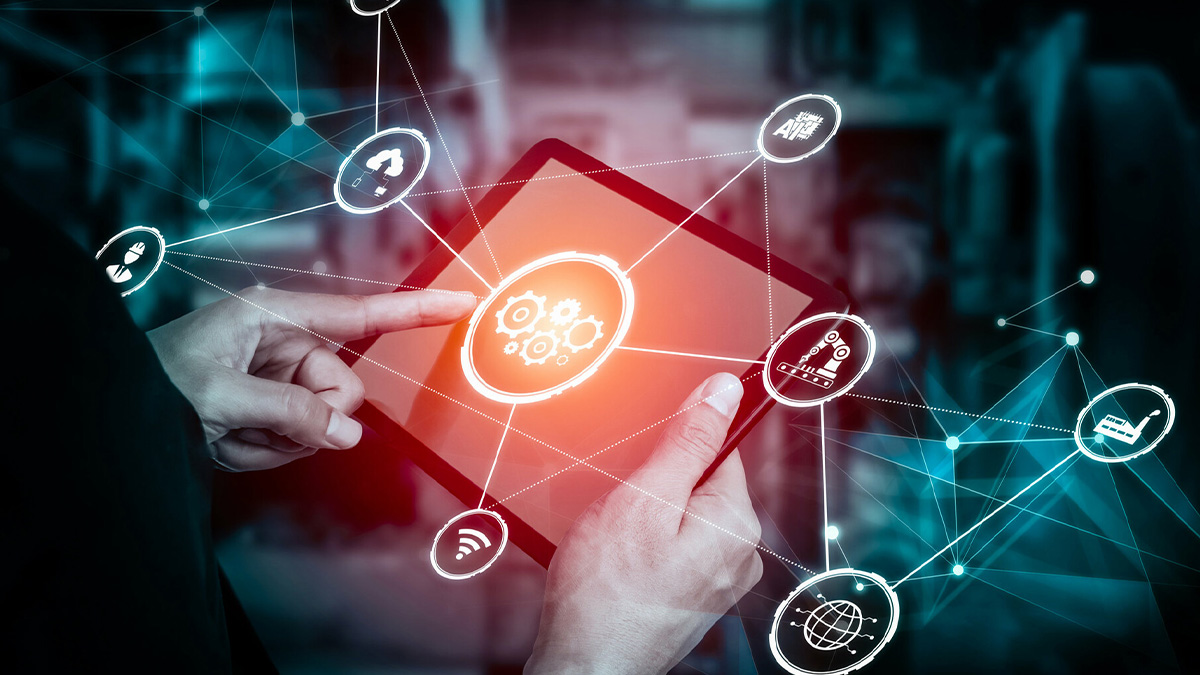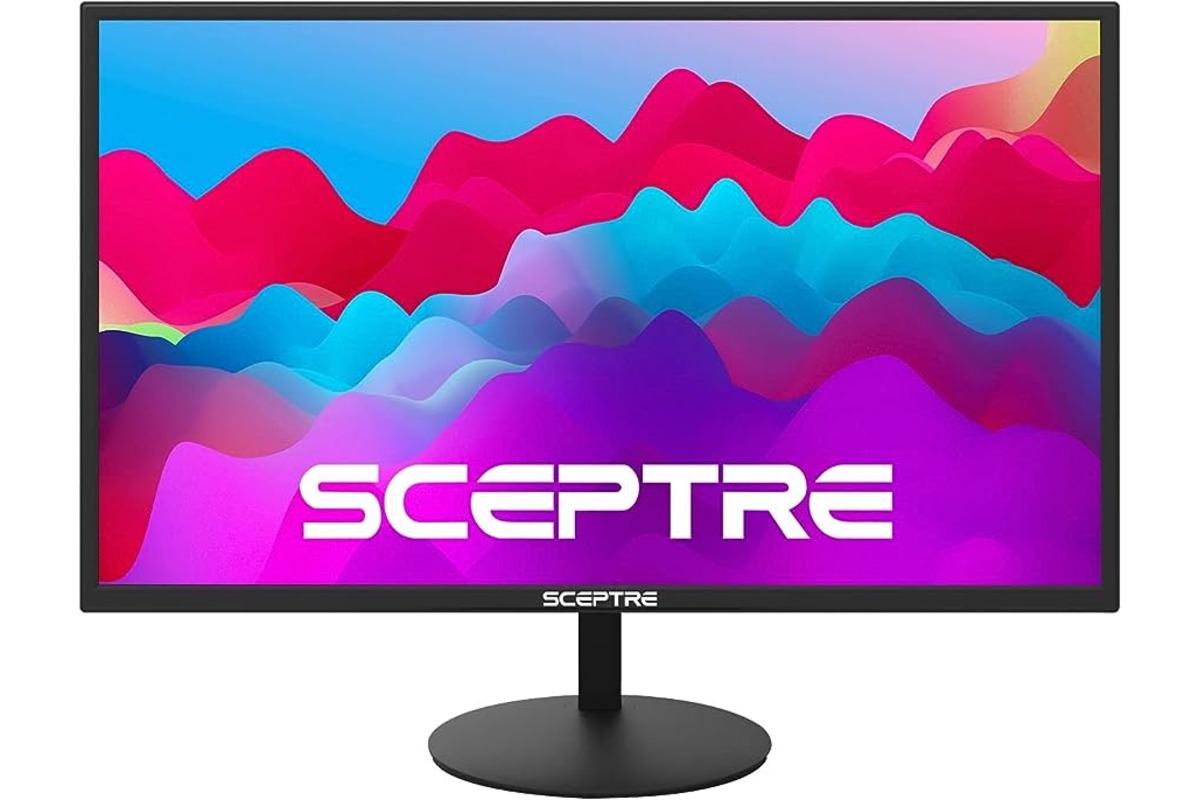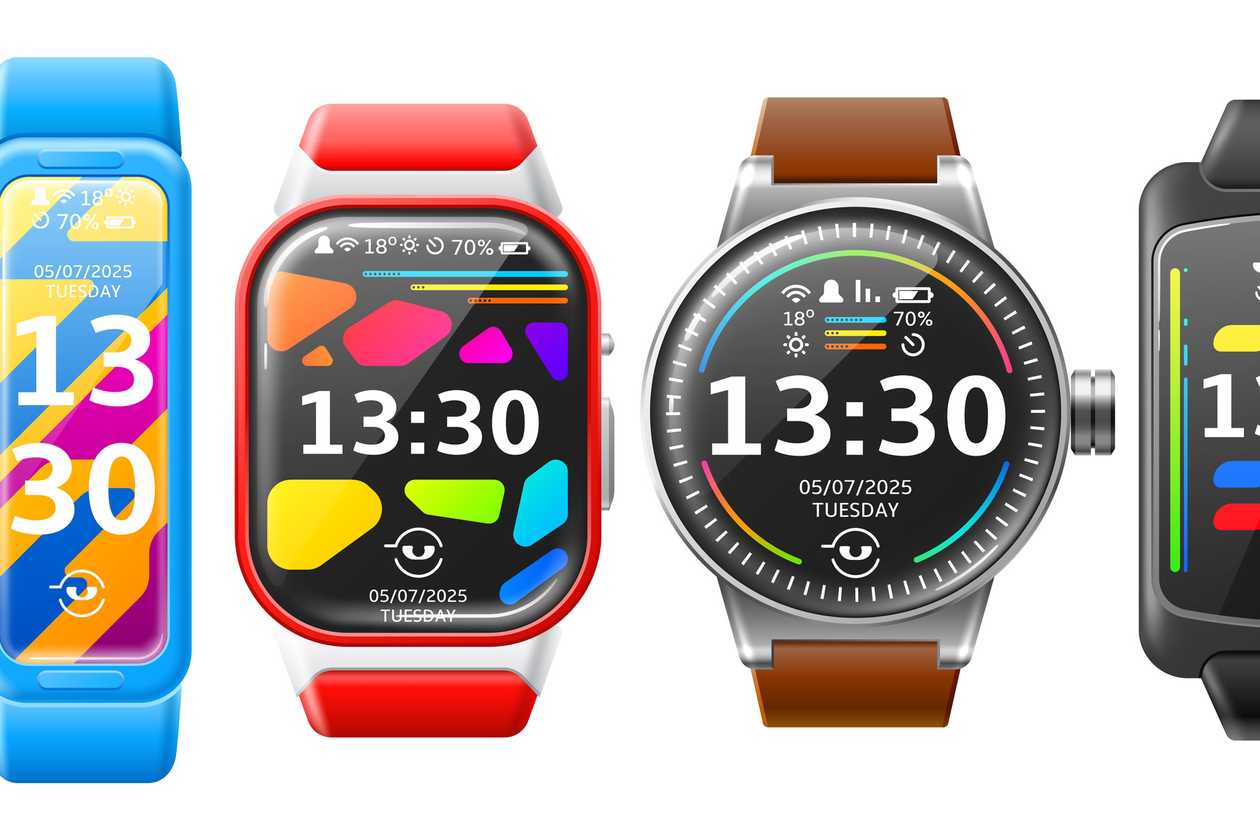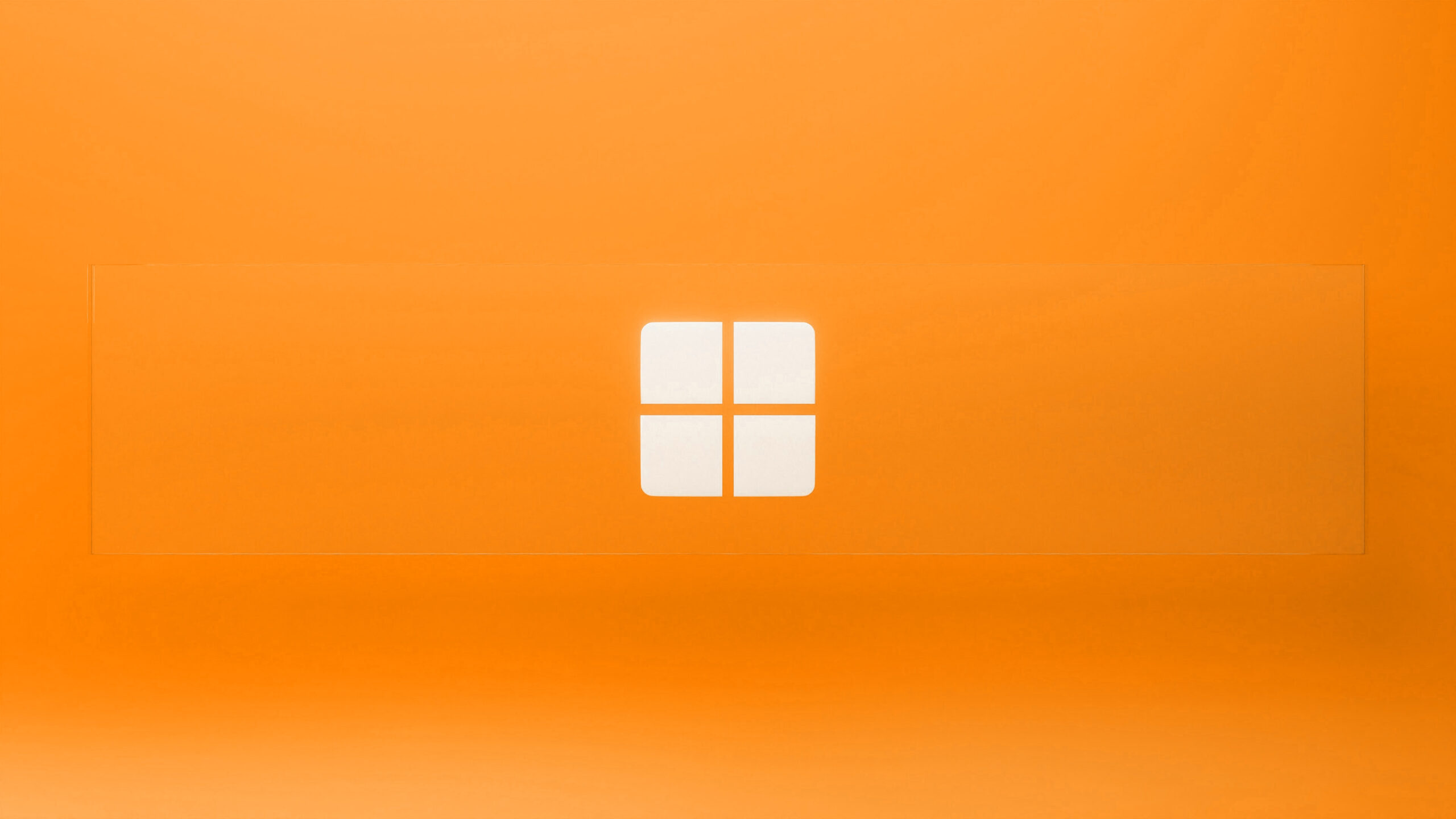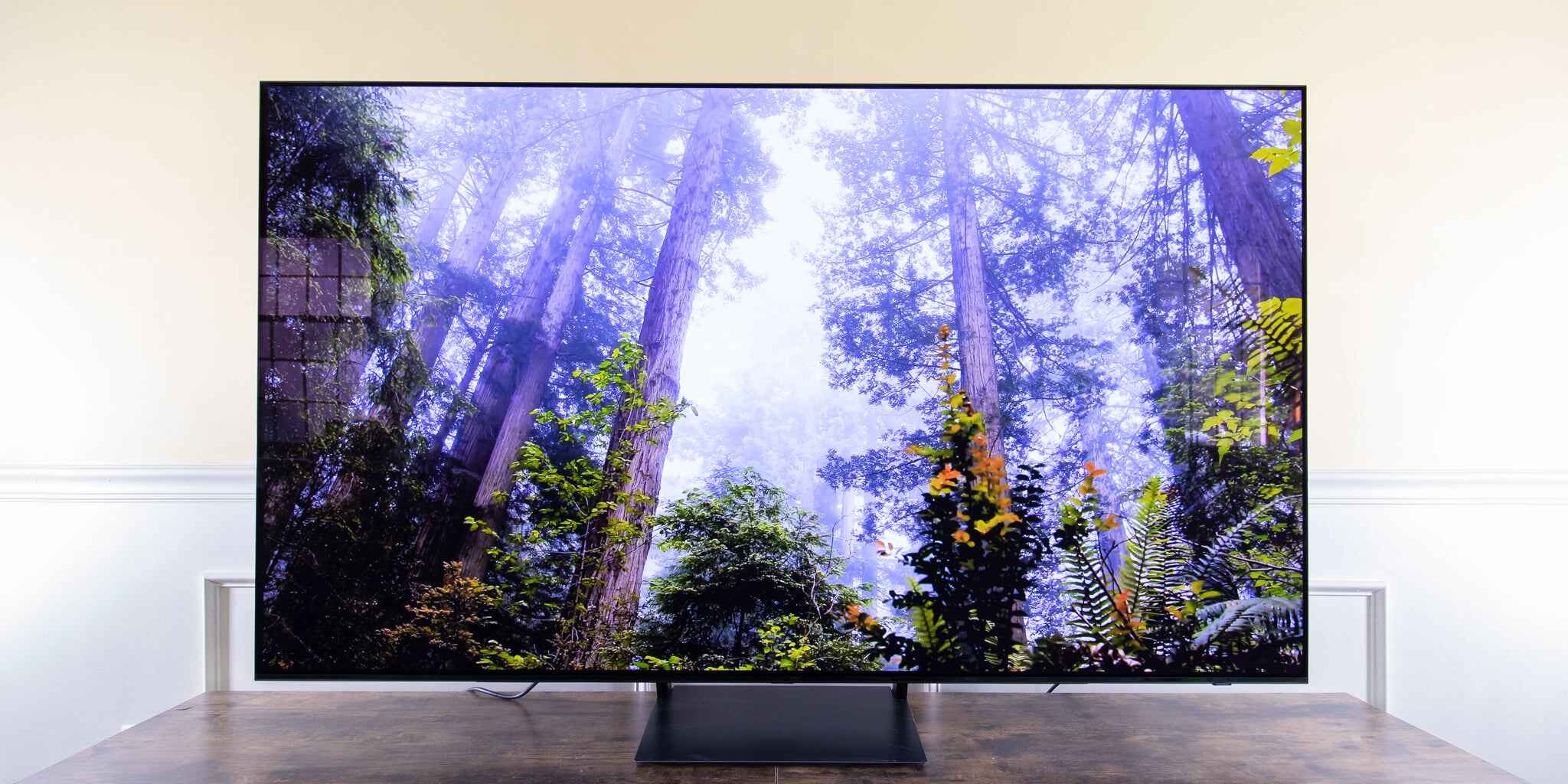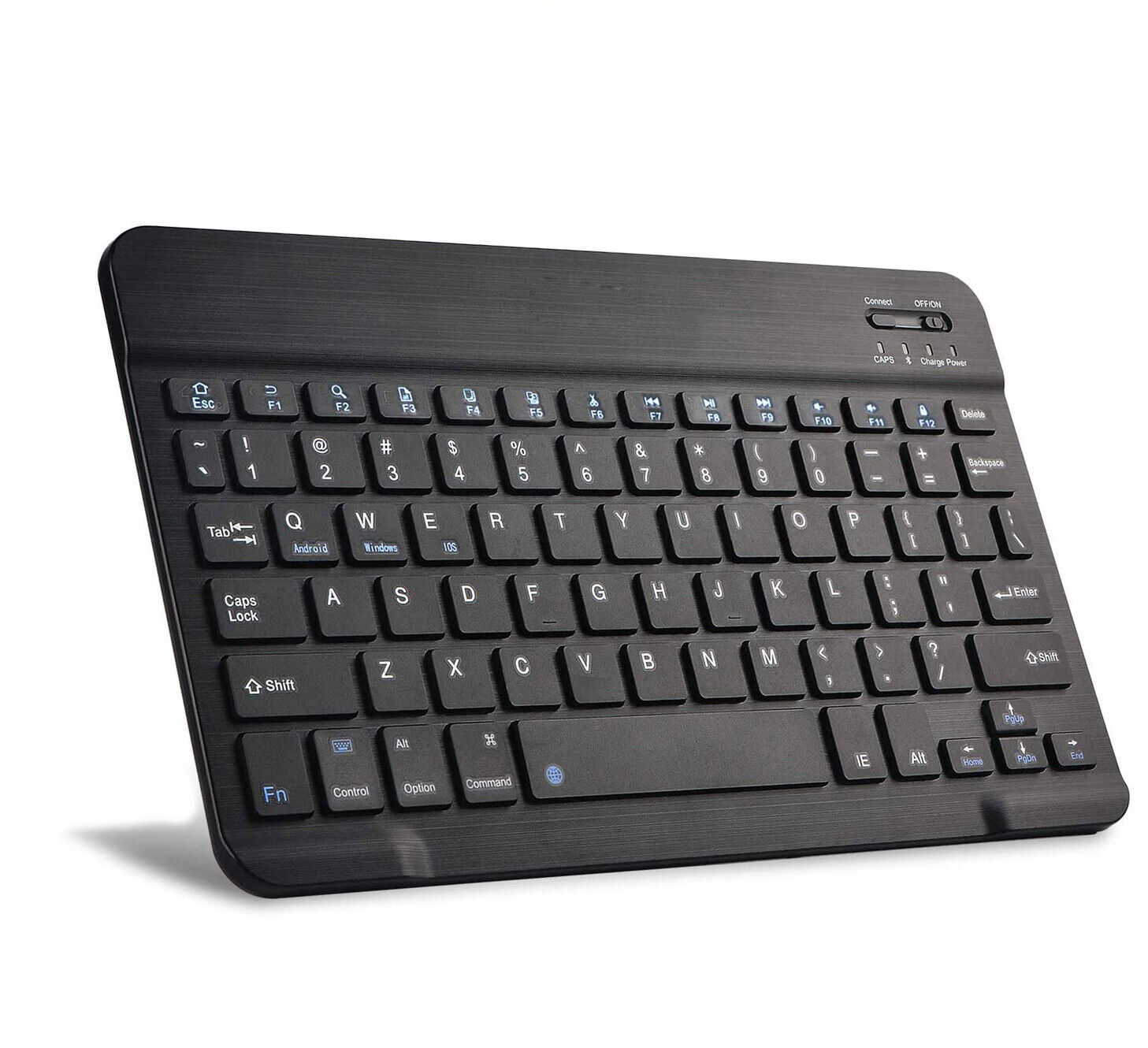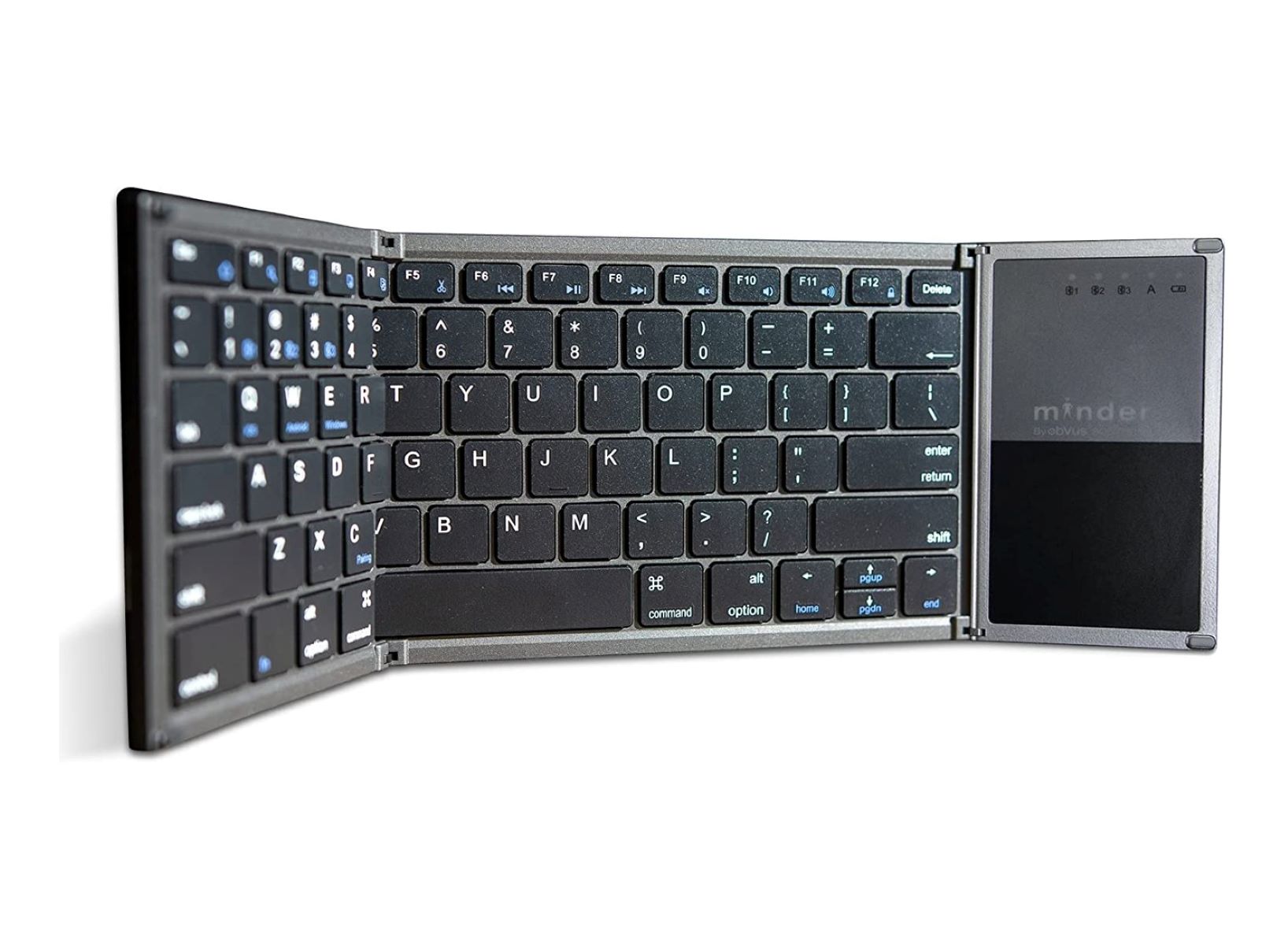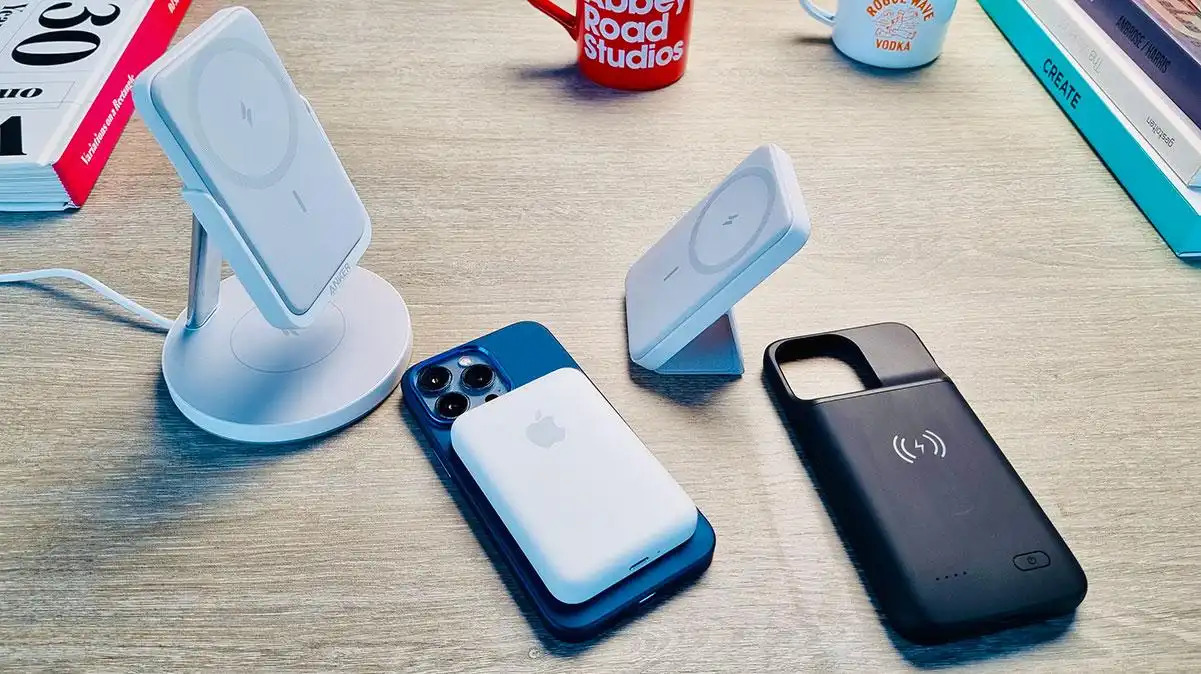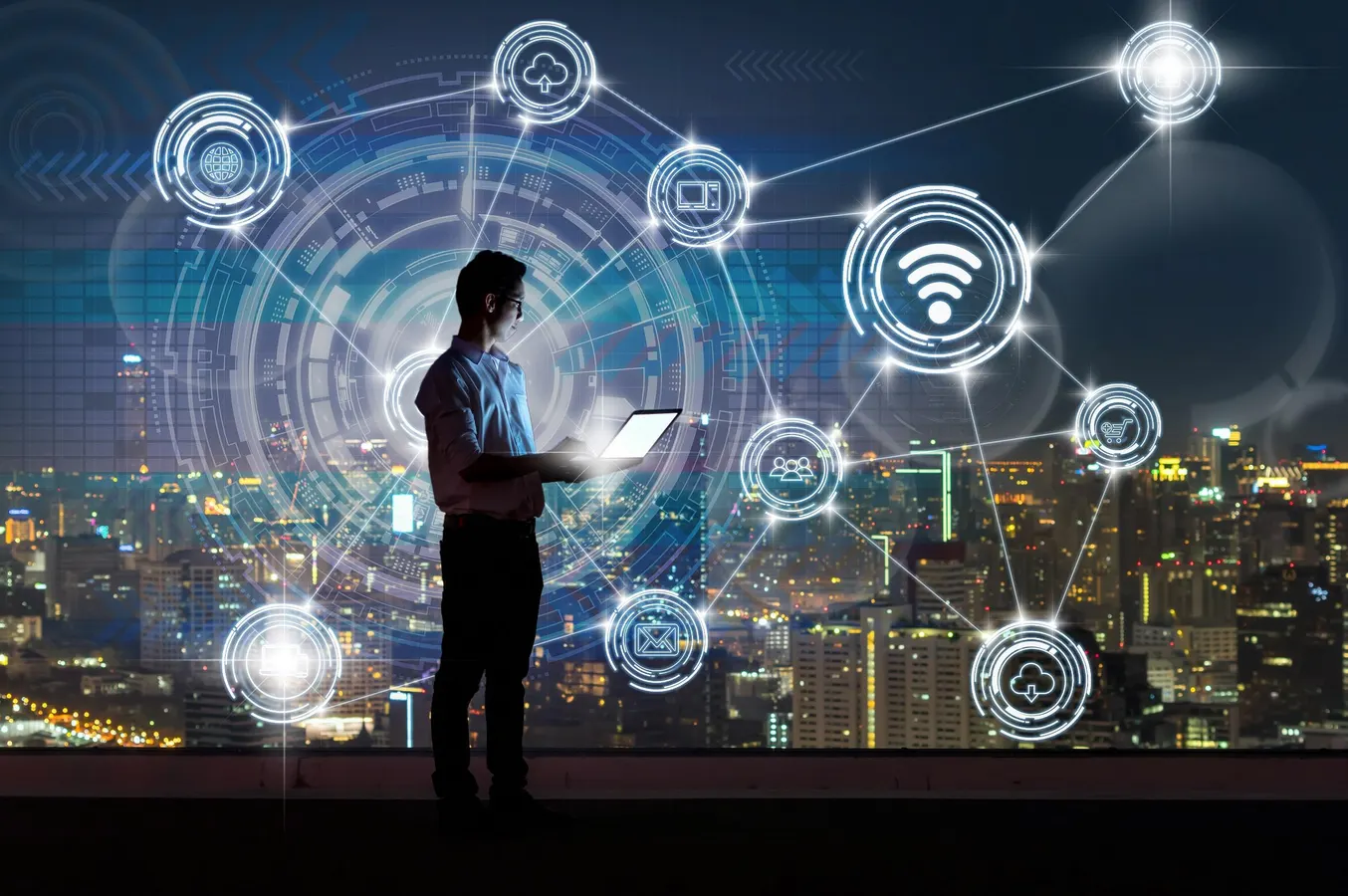Introduction
The Internet of Things, commonly referred to as IoT, has become a buzzword in recent years. It has revolutionized the way we interact with technology and has the potential to transform various industries. But what exactly does IoT stand for? In this article, we will explore the definition of IoT, its history, how it works, its applications, benefits, challenges, and the future of this futuristic technology.
IoT refers to a network of interconnected devices that are embedded with sensors, software, and other technologies to exchange data and communicate with each other over the Internet. These devices can be everyday objects, such as smart appliances, wearables, vehicles, or even industrial machinery. By connecting these devices, IoT enables them to collect and share information, perform automated tasks, and provide real-time insights.
The concept of IoT has been around for decades, but it gained significant attention in the early 2000s as advancements in wireless communication and miniaturization of technology made it more feasible and cost-effective. The idea of a “smart home” with interconnected devices controlling lighting, security systems, and appliances was one of the early applications of IoT.
Today, IoT has expanded beyond homes and is being implemented in various sectors, including healthcare, agriculture, transportation, manufacturing, and utilities. For example, in healthcare, IoT devices can monitor patients’ vital signs and send alerts to healthcare providers in emergencies. In agriculture, sensors in the soil can collect data on moisture levels, helping farmers optimize irrigation. In transportation, IoT enables connected cars to communicate with each other and traffic infrastructure, improving road safety and congestion management.
One of the key components of IoT is the ability to collect and analyze massive amounts of data. With the proliferation of devices and sensors, IoT generates an unprecedented volume of data, commonly known as “Big Data.” This data is processed and analyzed using advanced analytics and artificial intelligence algorithms to extract meaningful insights, enhance decision-making, and drive innovation.
While IoT has numerous benefits and potential applications, it also presents challenges. Security and privacy are major concerns as more devices become connected, increasing vulnerability to cyberattacks. Interoperability and standardization issues also arise when different devices and platforms need to communicate with each other seamlessly.
Despite these challenges, the future of IoT looks promising. As technology continues to advance, IoT will become more prevalent and integrated into our daily lives. It will further transform industries, improve efficiency, and pave the way for a more connected and automated future.
Definition of IoT
The Internet of Things (IoT) is a concept that refers to the network of interconnected physical devices or “things” embedded with sensors, software, and other technologies to exchange data and communicate with each other over the Internet. These devices can range from everyday objects like smart thermostats, fitness trackers, and home appliances to more complex systems like industrial machinery and smart cities infrastructure.
At its core, IoT is about connecting these devices to enable them to collect and share data, perform automated tasks, and provide real-time insights. It is the integration of physical objects into digital systems, creating a vast network of smart devices that can interact with the environment and with each other.
The functionality of IoT devices is made possible through the use of sensors, which gather data from the surrounding environment, and actuators, which allow devices to perform actions or control processes based on the received data. These devices are equipped with software and network connectivity, enabling them to send and receive data over the Internet or other communication channels.
The data collected by IoT devices can be as simple as temperature readings, location information, or as complex as video feeds or health monitoring records. This data is then processed, analyzed, and utilized to provide valuable insights, enhance decision-making processes, and automate various tasks.
The interconnectedness of IoT devices offers endless possibilities for applications across various industries. In healthcare, IoT devices can monitor patients’ vital signs, track medication adherence, and help doctors remotely diagnose and treat patients. In agriculture, IoT can optimize irrigation systems by measuring moisture levels in the soil or provide real-time data on weather conditions to improve crop yield.
Furthermore, IoT has the potential to enhance efficiency in manufacturing by enabling smart supply chain management, predictive maintenance of machinery, and improving product quality through real-time monitoring. In transportation, IoT can be used for fleet management, traffic monitoring and optimization, as well as vehicle-to-vehicle communication for increased road safety.
Overall, IoT represents the integration of physical devices, sensors, software, and connectivity to create intelligent systems that can interact and communicate with each other seamlessly. It offers immense opportunities for innovation, automation, and improved decision-making across various sectors, ultimately shaping the way we live and work in the digital age.
Brief History of IoT
The concept of the Internet of Things (IoT) has been around for several decades, but it has gained significant traction and attention in recent years. The evolution of IoT can be traced back to the early 1980s when the idea of connecting devices and machines started to emerge.
Kevin Ashton, a British technology pioneer, first coined the term “Internet of Things” in 1999 while working on a project at MIT. Ashton envisioned a world where everyday objects could communicate with each other and with humans through the Internet. However, it wasn’t until the early 2000s that IoT began to make significant advancements.
One of the key milestones in the history of IoT is the development of the Radio-frequency Identification (RFID) technology. RFID tags, embedded with a unique identifier, allow objects to be identified and tracked remotely. This technology laid the foundation for the concept of interconnected devices, as it provided a way to easily identify and gather data from physical objects.
As wireless communication technologies improved and became more accessible, the concept of IoT started to take shape. The emergence of Wi-Fi, Bluetooth, and cellular networks enabled devices to connect to the internet wirelessly, eliminating the need for physical connections.
In 2008, the number of devices connected to the internet exceeded the world population, marking a significant turning point in the IoT landscape. This exponential growth in connected devices was driven by the increasing adoption of smartphones, tablets, and other smart devices that became an integral part of people’s lives.
The widespread availability of high-speed internet and the advancements in cloud computing further propelled the development of IoT. These technologies provided a scalable and cost-effective infrastructure for storing and processing the massive amounts of data generated by IoT devices.
With the rise of IoT, various industries started experimenting and implementing this technology. Smart homes, equipped with connected appliances, lighting systems, and security devices, became one of the early applications of IoT. This was followed by the integration of IoT in healthcare, agriculture, transportation, and manufacturing sectors.
Today, IoT continues to evolve and expand its reach. The deployment of 5G networks promises even faster and more reliable connectivity, making IoT devices more efficient and responsive. The convergence of IoT with other emerging technologies such as artificial intelligence, machine learning, and blockchain is opening up new possibilities and use cases.
In recent years, the focus has shifted from simply connecting devices to creating ecosystems where devices and platforms can seamlessly communicate and collaborate. This shift towards interoperability and standardization is crucial to unlocking the full potential of IoT and ensuring its widespread adoption.
Overall, the history of IoT is a testament to the ingenuity and innovation of technology pioneers who envisioned a world where objects can communicate and interact with each other. As IoT continues to mature, it holds the promise of transforming industries, enhancing efficiency, and improving our way of life.
How Does IoT Work?
The Internet of Things (IoT) works by connecting physical objects, also known as “things,” to the internet and enabling them to gather data, exchange information, and perform automated tasks. This interconnected network of devices comprises sensors, actuators, communication technologies, and cloud computing infrastructure.
At the heart of IoT are the sensors, which are embedded in the devices and collect data from the surrounding environment. These sensors can detect various types of information, such as temperature, humidity, motion, light levels, and much more. The collected data is then processed and transmitted to the cloud or other networks for further analysis and utilization.
Once the data is collected, it is sent to a central server or a cloud-based platform via wired or wireless communication protocols such as Wi-Fi, Bluetooth, or cellular networks. These protocols allow the devices to communicate with each other and with the internet without the need for physical connections.
In the cloud or on the server, the collected data is stored, processed, and analyzed using advanced analytics techniques and algorithms. This analysis helps extract meaningful insights, detect patterns, and make predictions, which can then be used to optimize processes, make informed decisions, and trigger automated actions.
IoT devices are equipped with actuators, which enable them to perform actions based on the analyzed data. For example, a smart thermostat can receive temperature data from sensors and adjust the temperature accordingly. Similarly, a smart irrigation system can receive moisture data from soil sensors and activate the irrigation mechanism when the soil becomes too dry.
To manage and control the multitude of IoT devices and their functionalities, a central control system or a user interface is often used. This allows users to monitor the status of devices, change settings, and receive alerts or notifications when certain conditions are met.
Moreover, IoT devices can also communicate with each other, forming dynamic networks to exchange information and collaborate on tasks. For example, in a smart home scenario, a sensor detecting a person entering a room can trigger the lights to turn on or adjust the temperature automatically.
Security is a critical aspect of IoT, as there is a vast amount of data being transmitted and stored. Measures such as encryption, authentication, and secure communication protocols are implemented to ensure the privacy and integrity of the data. IoT security is an ongoing challenge due to the diverse range of devices, heterogeneous networks, and the constantly evolving threat landscape.
As IoT technology continues to evolve, advancements such as edge computing, which processes data at the edge of the network, and the integration of artificial intelligence and machine learning, will further enhance the capabilities of IoT devices. These advancements will enable faster and more intelligent decision-making, reduced latency, and more efficient use of resources.
In summary, IoT works by connecting physical devices with sensors and actuators to the internet and harnessing the power of data analysis and automation. By collecting and exchanging data, IoT enables a wide range of applications and has the potential to transform industries, improve efficiency, and enhance our daily lives.
Applications of IoT
The Internet of Things (IoT) has permeated various industries and has found applications in numerous sectors. The ability of IoT devices to collect and exchange data, as well as perform automated actions, has opened up a wide range of opportunities for innovation and efficiency. Here are some prominent applications of IoT:
1. Smart Home: IoT has revolutionized the concept of smart homes, where devices such as lighting systems, thermostats, security cameras, and appliances can be controlled and monitored remotely. Home automation allows for energy-efficient management, enhanced security and safety, and increased convenience.
2. Healthcare: IoT has significant implications in the healthcare industry. Connected wearable devices, such as fitness trackers and smartwatches, enable individuals to monitor their health metrics in real-time. IoT also facilitates remote patient monitoring for chronic disease management, medication adherence tracking, and telemedicine services, enabling remote diagnosis and treatment.
3. Agriculture: IoT plays a vital role in optimizing agriculture practices. Smart sensors can monitor soil moisture, temperature, and humidity, allowing for precise irrigation management. IoT solutions also provide data-driven insights on crop health, pest control, and predictive analytics, empowering farmers to make informed decisions and improve crop yield.
4. Industrial Automation: IoT is transforming the industrial landscape by enabling smart factories and automation processes. Industrial IoT (IIoT) facilitates real-time monitoring of equipment performance, predictive maintenance, and optimization of production processes. Connected sensors and devices enhance operational efficiency, reduce downtime, and improve overall productivity.
5. Transportation: IoT has revolutionized transportation systems, making them more efficient, safe, and sustainable. Connected vehicles enable real-time monitoring of vehicle performance, asset tracking, and predictive maintenance. Smart traffic management systems leverage IoT to optimize traffic flow, reduce congestion, and enhance road safety through vehicle-to-vehicle (V2V) and vehicle-to-infrastructure (V2I) communication.
6. Energy Management: IoT enables efficient energy management by monitoring and controlling energy consumption in buildings, industries, and cities. Smart grid technology allows for real-time monitoring of energy usage, managing peak demand, and integrating renewable energy sources. IoT-based energy management systems promote sustainability and provide cost savings through optimized energy utilization.
7. Environmental Monitoring: IoT facilitates environmental monitoring by deploying sensors to collect data on air quality, water quality, noise levels, and other environmental factors. This data helps in identifying pollution sources, managing resources efficiently, and implementing proactive measures for environmental conservation.
8. Retail: IoT is reshaping the retail industry by creating personalized and interactive shopping experiences. Smart shelves, beacons, and RFID technology enable inventory management, customer tracking, and improved in-store navigation. IoT also enables personalized marketing campaigns and targeted advertisements based on customer behavior and preferences.
9. Smart Cities: IoT is a key enabler of smart city initiatives. By integrating various systems such as transportation, energy, waste management, and public safety, IoT enables efficient resource utilization, intelligent traffic management, and enhanced citizen services. Smart city projects leverage IoT to create sustainable, connected, and livable urban environments.
These are just a few examples of how IoT is transforming different industries and sectors. As technology continues to advance, the applications of IoT are expected to expand even further, shaping the future of our interconnected world.
Benefits and Challenges of IoT
The Internet of Things (IoT) offers numerous benefits across various industries, but it also presents its fair share of challenges. Understanding both the advantages and obstacles is crucial to harnessing the full potential of this transformative technology.
Benefits of IoT:
– Efficiency and Automation: IoT enables automation of processes, leading to increased efficiency and productivity. Connected devices can perform tasks without human intervention, saving time and reducing human error.
– Data-Driven Insights: IoT generates a vast amount of data that can be analyzed to gain valuable insights. These insights help in making informed decisions, optimizing operations, and driving innovation.
– Improved Safety & Security: IoT enhances safety and security across various domains. Connected devices enable remote monitoring of assets, detection of anomalies, and timely response to emergencies.
– Cost Savings: IoT can lead to cost savings through operational efficiencies, predictive maintenance, optimized resource allocation, and energy management.
– Enhanced Customer Experience: IoT enables personalized and seamless customer experiences through connected devices, tailored recommendations, and improved service delivery.
Challenges of IoT:
– Security and Privacy: With the increasing number of connected devices and data sharing, ensuring the security and privacy of IoT systems is a significant challenge. Protecting against cyber threats, data breaches, and unauthorized access is paramount.
– Interoperability: The lack of standardization and interoperability among various IoT devices and platforms poses challenges for seamless communication and integration. Compatibility issues can hinder scalability and hinder widespread adoption.
– Scalability: As the number of IoT devices grows, managing and scaling networks becomes more complex. Ensuring network reliability, connectivity, and bandwidth can be challenging, especially in large-scale implementations.
– Data Management: IoT generates massive volumes of data, requiring efficient data storage, processing, and analytics capabilities. Handling and analyzing this Big Data in real-time can be resource-intensive and require robust infrastructure.
– Ethical and Social Implications: The widespread deployment of IoT raises ethical concerns regarding data privacy, surveillance, and the potential for misuse of personal information. Striking a balance between innovation and protecting individuals’ rights is crucial.
While the benefits of IoT are compelling, addressing the challenges is essential to unleash its full potential. Collaboration between stakeholders, standardization efforts, and investments in security and infrastructure are key to overcoming these obstacles and ensuring the sustainable growth of IoT.
Future of IoT
The future of the Internet of Things (IoT) holds immense potential for innovation, connectivity, and transformation across various industries. As advancements in technology continue to unfold, IoT is poised to play an even more significant role in shaping our interconnected world.
1. Expansion and Integration: The number of IoT devices is projected to grow exponentially, with estimates ranging from tens of billions to hundreds of billions by 2030. This expansion will involve not only individual consumer devices but also industrial and infrastructure applications. IoT will become deeply integrated into our daily lives, creating a seamless and connected ecosystem.
2. Edge Computing: The rise of edge computing, where data processing and analytics occur closer to the source of data generation, will revolutionize IoT. Moving processing capabilities closer to IoT devices will significantly reduce latency, enable real-time decision-making, and minimize the reliance on cloud infrastructure. This distributed approach will improve efficiency and enhance the responsiveness of IoT systems.
3. AI and Machine Learning Integration: The integration of Artificial Intelligence (AI) and Machine Learning (ML) with IoT will unlock new levels of automation and intelligence. AI algorithms will enable IoT devices to learn and adapt to patterns, make predictions, and take autonomous actions based on real-time data. This integration will pave the way for more sophisticated and autonomous IoT systems.
4. 5G Connectivity: The deployment of 5G networks will significantly enhance the connectivity and capabilities of IoT. 5G offers faster and more reliable data transmission, lower latency, and higher device density, enabling the seamless connection of a vast number of IoT devices. This enhanced connectivity will enable more complex IoT applications and drive further innovation.
5. Industry-Specific Solutions: IoT will continue to revolutionize industries with industry-specific solutions. In healthcare, IoT will facilitate remote patient monitoring, personalized medicine, and efficient healthcare delivery. In manufacturing, IoT will enable smart factories with predictive maintenance, real-time monitoring, and seamless supply chain management. These tailored applications will drive efficiencies and improvements within each sector.
6. Blockchain Integration: The integration of blockchain technology with IoT has the potential to address security and privacy concerns. Blockchain can provide a decentralized and transparent network for secure data exchange and authentication, ensuring data integrity and trustworthiness in IoT systems.
7. Sustainable IoT: With increasing environmental concerns, IoT will play a crucial role in promoting sustainability. Smart energy management, efficient resource utilization, and predictive maintenance will contribute to reducing energy consumption, minimizing waste, and creating more sustainable cities and industries.
8. Ethical and Regulatory Considerations: As IoT continues to grow, ethical and regulatory considerations will become more important. Establishing guidelines for data privacy, security standards, and responsible use of IoT technology will be crucial to ensure trust, protect privacy, and address potential social implications.
The future of IoT holds immense possibilities and has the potential to transform our lives and industries. As technology continues to advance and stakeholders collaborate, IoT will become more integrated, intelligent, and focused on addressing societal challenges, creating a more connected and sustainable future.
Conclusion
The Internet of Things (IoT) has emerged as a transformative technology, connecting the physical and digital worlds in unprecedented ways. With its ability to collect, exchange, and analyze data, IoT is reshaping industries, enhancing efficiency, and bringing forth a new era of connectivity.
From smart homes to healthcare, agriculture to transportation, and beyond, IoT is revolutionizing how we interact with technology and how devices interact with each other. The benefits of IoT are vast, ranging from increased efficiency, automation, and cost savings to improved safety, enhanced customer experiences, and data-driven insights. IoT has opened up doors for innovation, allowing businesses and industries to reimagine their processes and create new use cases.
However, along with the numerous benefits, IoT also presents challenges that must be addressed. Security and privacy concerns, interoperability issues, scalability, and ethical implications pose challenges for the widespread adoption of IoT. Collaboration between stakeholders, industry standards, robust security measures, and regulatory frameworks are essential to overcome these challenges and ensure the sustainable growth of IoT.
The future of IoT holds immense promise. As technology continues to advance, the integration of AI, machine learning, and edge computing will enhance IoT capabilities, enabling more intelligent and autonomous systems. The deployment of 5G networks will revolutionize connectivity, allowing for a more seamless and robust network of interconnected devices. Industry-specific solutions, blockchain integration, and a focus on sustainability will further drive the evolution of IoT.
As we look ahead, it is crucial to balance innovation with responsible use and ethical considerations. Ensuring data privacy, security, and addressing societal implications will be pivotal in building trust and maximizing the potential benefits of IoT.
In conclusion, IoT has the power to transform industries, improve efficiency, and enhance our daily lives. By harnessing the potential of IoT, we can create a connected world that empowers us with insights, automation, and intelligence, ultimately shaping a better future for all.







